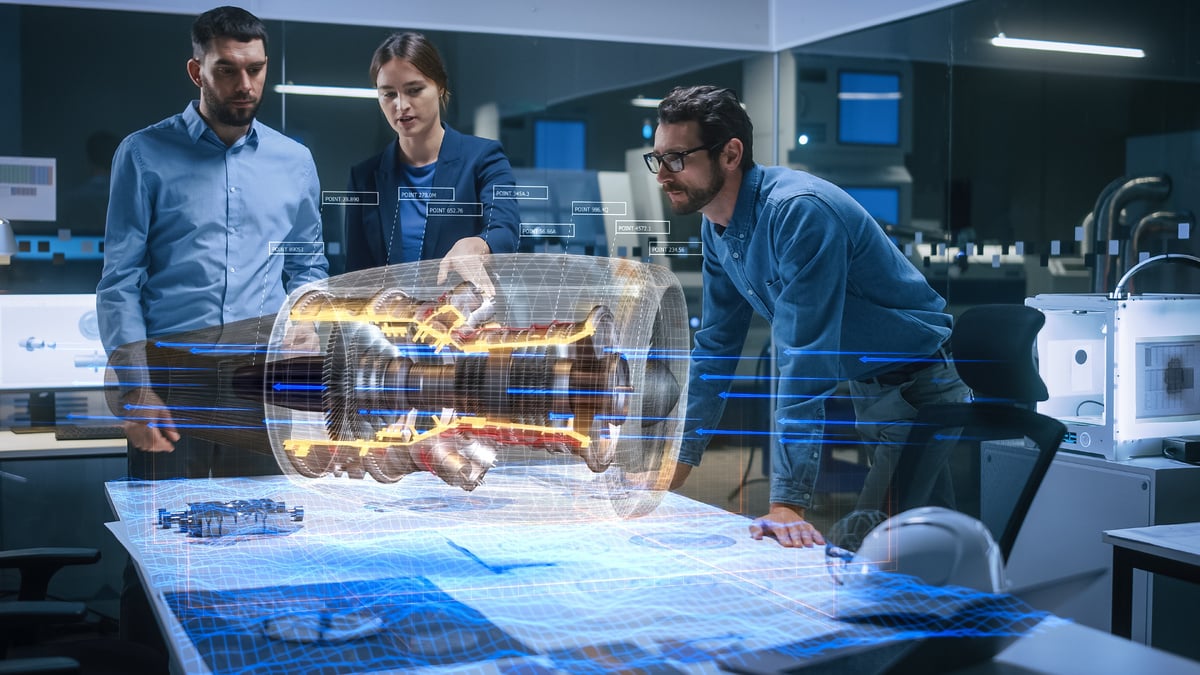
In the world of bridge and highway construction, the use of Fiberglass Reinforced Polymer (FRP) rebar has gained traction due to its strength, light weight, and corrosion resistance. These characteristics make it an attractive alternative to traditional steel rebar, offering enhanced longevity and reduced maintenance costs. However, there are potential problems with this material which has led to researchers looking into developing alternatives, such as Glass Fiber Reinforced Thermoplastic (GFRTP) rebar.
This article delves into the world of GFRTP rebar, exploring its numerous benefits and the innovative production process behind it. We aim to shed light on how GFRTP rebar stands to potentially revolutionize the construction industry, offering enhanced flexibility, sustainability, and performance. Join us as we examine the compelling advantages and the potential promising future of GFRTP rebar in construction.
What is FRP Rebar?
FRP rebar is a composite material consisting of a polymer matrix reinforced with fibers, usually made of glass, carbon, or other high-strength material. Its application in concrete reinforcement is essential for structures exposed to harsh environmental conditions, ensuring durability and resistance to degradation. The growing adoption of FRP rebar in construction highlights its significant advantages.
However, despite its numerous benefits, FRP rebar is not without its limitations. One significant drawback is its inflexibility on the construction site. Unlike steel rebar, FRP rebar cannot be bent into different shapes at the site, limiting its versatility in construction scenarios that require customized shaping. Additionally, FRP rebar poses challenges for recycling, contributing to environmental concerns as the construction industry seeks more sustainable materials and practices.
Enter Glass Fiber Reinforced Thermoplastic rebar–a potential alternative that addresses these issues. GFRTP rebar is not only strong and corrosion-resistant like its FRP counterpart, but it can also be reheated and reshaped at the construction site, offering the flexibility that FRP rebar lacks. This advantage allows for more versatile applications, making it a highly practical choice for diverse construction needs. Although it is not yet commercially available, this material could impact the construction industry in the future.
Potential Advantages of GFRTP Rebar
One of the most notable advantages of GFRTP rebar is its ability to be reheated and reformed on-site. Unlike traditional FRP rebar, which is fixed in its form, GFRTP rebar can be heated and reshaped into hooks, stirrups, or other configurations required for specific construction applications. This on-site reformability provides unparalleled flexibility, allowing construction teams to customize the rebar according to the unique needs of each project. The ability to adapt and modify the rebar on-site eliminates the need for prefabricated shapes, ensuring optimal compatibility with diverse structural designs and requirements.
In addition to its reformability, GFRTP rebar also boasts the capacity for the creation of surface deformations. Through secondary processes, it is possible to add ribbing or twisted fibers to the surface of the rebar, enhancing its bond with concrete. This enhanced bonding capacity ensures superior structural integrity, further bolstering the stability and durability of constructions utilizing GFRTP rebar. The ability to modify the surface texture of the rebar allows for tailored solutions, optimizing the interaction between rebar and concrete for each specific application.
The Production Process of GFRTP Rebar
The potential production process of GFRTP rebar is a fascinating convergence of innovative technology and advanced engineering principles. Researchers are working on making these processes work for real-world manufacturing. Below, we delve into the intricate details of the GFRTP rebar manufacturing process, highlighting the pivotal role of the Continuous Forming Machine (CFM), the non-reactive pultrusion process, and the heating and cooling protocols that ensure the production of high-quality GFRTP rebar.
The Continuous Forming Machine is a potential method for GFRTP rebar production. This state-of-the-art machinery plays a crucial role in overcoming the traditional challenges associated with scalability and production issues in thermoplastic pultrusion processes. The CFM facilitates a streamlined and efficient manufacturing process, ensuring the consistent production of high-quality GFRTP rebar..
Non-Reactive Pultrusion Process
The non-reactive pultrusion process is another potential cornerstone in the production of GFRTP rebar. This method begins with the introduction of towpregs or pre-impregnated fibers into a guidance system. Unlike conventional pultrusion processes that rely on a reactive liquid resin, this non-reactive process leverages thermoplastic materials, enhancing efficiency and product quality.
Towpregs or Pre-Impregnated Fibers
The process starts with feeding towpregs or pre-impregnated fibers into the guidance system of the CFM.
Heating
The material is then heated to the desired consolidation temperature, making the process highly efficient and reducing the time the material remains in the consolidating die.
Shaping
As the material traverses through the heated zone, it is shaped into the desired profile or sheet, ensuring precision and consistency in the final product.
The Heating and Cooling Process
The heating and cooling processes in the production of GFRTP rebar are meticulously controlled to ensure the optimal physical properties of the final product.
Heating Process
The heating source in the CFM efficiently raises the material to the appropriate consolidation temperature, ensuring the material is adequately prepared for shaping and forming.
Cooling Process
After shaping, the material enters the cooled die where it is systematically cooled below the glass transition temperature. Depending on the type of polymer used, water or air is employed for cooling. This controlled cooling process guarantees the structural integrity and durability of the GFRTP rebar, preparing it for cutting and final inspection.
Use of PETG in GFRTP Rebar Production
In the potential production of GFRTP rebar for commercial use, the choice of materials is paramount to ensuring the optimal performance of the final product. One such crucial material is polyethylene terephthalate-glycol (PETG), a robust and versatile thermoplastic polymer.
The utilization of PETG in GFRTP rebar production is a strategic decision underpinned by the material's distinctive advantages. PETG, when combined with E-glass fibers, offers superior mechanical properties and processability, ensuring the production of high-strength, durable GFRTP rebar.
Advantages of Using PETG and E-Glass Fibers
Amorphous Nature
PETG is amorphous, meaning it is not sensitive to cooling, thereby eliminating problems related to crystallization during the production process.
Compatibility with E-Glass Fibers
The synergy between PETG and E-glass fibers enhances the strength and durability of GFRTP rebar, ensuring its readiness for demanding construction applications.
Ease of Processing
PETG’s processability allows for efficient and consistent production, contributing to the scalability of GFRTP rebar manufacturing
GFRTP rebar could revolutionize the construction industry by addressing the long-standing limitations of traditional rebar materials. Its advanced features and adaptability make it a perfect fit for diverse construction needs, from bridges and highways to complex architectural projects. The potential to reshape on-site and the enhanced bonding capacity with concrete amplify the material's suitability for ensuring resilient and long-lasting construction.














